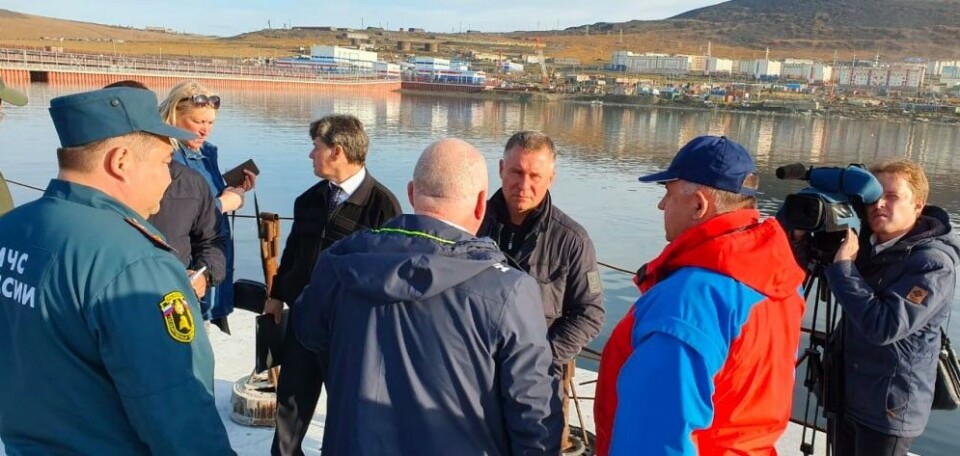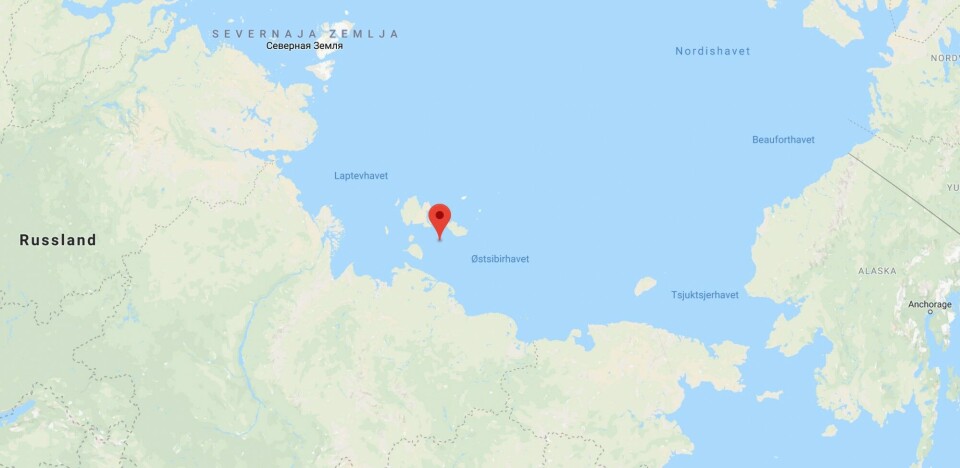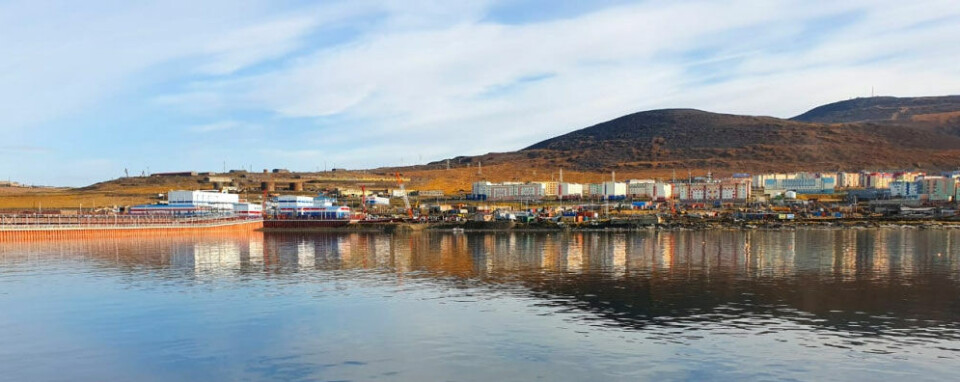
As floating nuclear power plant enters East Siberian Sea, emergency services in Pevek make a last check
Final preparations in the remote Arctic town that will host the floating nuclear installation.
p.p1 {margin: 0.0px 0.0px 0.0px 0.0px; font: 11.0px ‘Helvetica Neue’; color: #000000}p.p2 {margin: 0.0px 0.0px 0.0px 0.0px; font: 11.0px ‘Helvetica Neue’; color: #000000; min-height: 12.0px}span.s1 {font-kerning: none}span.s2 {font-kerning: none; color: #95000e; -webkit-text-stroke: 0px #95000e}

The «Akademik Lomonosov» on the 6th September passed the Sannikov Strait south of the New Siberian Islands and made it into the East Siberian Sea. The floating installation now has only about 3 days left of its extensive voyage across the Northern Sea Route.
According to the Northern Sea Route Administration, the installation and its accompanying vessels are due to arrive in Pevek on the 9th of September.
The «Akademik Lomonosov» on 23rd August set out of the Kola Bay after more than a year of preparations in Murmansk. Towed by icebreaker «Dikson» and accompanied by support ships «Yasnyy» and «Kapitan Martyshkin», the floating power plant had course for the Barents Sea and subsequently made it through the Kara Sea and Laptev Sea.

The voyage from Murmansk to Pevek is about 4,700 km long.
Is Pevek ready?
The formerly desolate town with a population of about 4,200 has been under preparations for years. Visits by federal officials and inspectors have been numerous.
Among the last official visits to Pevek was by Minister of Emergency Situations Yevgeny Zinichev who on 5th September arrived with a group of federal officials. Zinichev had a special interest in the local coastal infrastructure, the ministry informs.
«It is expected that the floating station «Akademik Lomonosov» will arrive in Chukotka by the middle of September and it is therefore necessary in advance to look at the coastal infrastructure […]», the minister said.
According to the ministry, a special fire- and rescue department is under construction on site. When completed, the unit can ultimately serve as base for a bigger Arctic rescue center.
On site are also a big number of representatives of nuclear power company Rosatom that be the ones that run the plant.
Local authorities previously made clear that they need to built 320 new apartments and that a major facelift of local infrastructure is in the making. Two architecture companies in 2016 came to town and started working on sketches for a new and upgraded port zone, a new church, as well as bicycle roads, squares, parks and playing areas for kids.
Rosgvardia
Also law-enforcement authorities are on site preparing to keep an eye on the new strategic object. It is Rosgvardia, the Russian National Guard, that has been commissioned to protect the power plant and its surroundings.
According to the security service, the formation of guarding units were in late August about to be completed and training was ongoing in cooperation with representatives of Rosatom.

The protection service will be provided by one of Rosgvardia’s so-called «sub-units of non-governmental security,» the security service informs.
Big risks
p.p1 {margin: 0.0px 0.0px 0.0px 0.0px; line-height: 20.0px; font: 17.0px Georgia; color: #1f1f1f; -webkit-text-stroke: #1f1f1f; background-color: #ffffff}p.p2 {margin: 0.0px 0.0px 0.0px 0.0px; line-height: 20.0px; font: 17.0px Georgia; color: #1f1f1f; -webkit-text-stroke: #1f1f1f; background-color: #ffffff; min-height: 20.0px}p.p3 {margin: 0.0px 0.0px 10.6px 0.0px; line-height: 20.0px; font: 17.0px Georgia; color: #1f1f1f; -webkit-text-stroke: #1f1f1f; background-color: #ffffff}p.p4 {margin: 0.0px 0.0px 10.6px 0.0px; line-height: 20.0px; font: 17.0px Georgia; color: #1f1f1f; -webkit-text-stroke: #1f1f1f; background-color: #ffffff; min-height: 20.0px}span.s1 {font-kerning: none}
The «Akademik Lomonosov» has two KLT40S reactors and will provide heat and electricity to Pevek for the next 12 years. After that, it will have to be towed back either to Rosatomflot’s base in Murmansk, or to a shipyard like in Severodvinsk for unloading the spent nuclear fuel and carry out other maintenance work.
Environmentalists have criticized the project and warned against possible major risks.
Environmental organization Greenpeace has described the project as a “nuclear Titanic” or a “Chernobyl on ice”.
«We are sure it has been built not to cover the needs of Chukotka, but as a working model for possible foreign customers,» says Rashid Alimov, nuclear campaigner with Greenpeace in Moscow told the Barents Observer.
«We think floating nuclear plants are simply a too risky and too expensive way of producing electricity.»
















